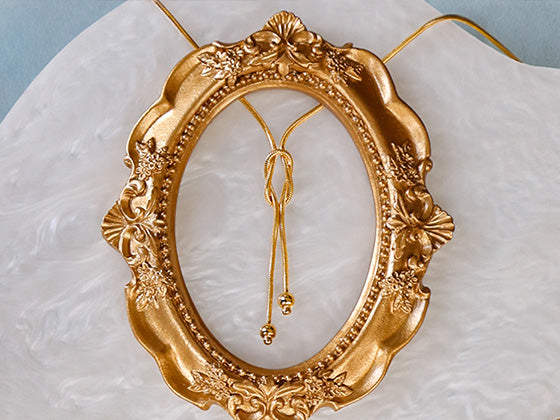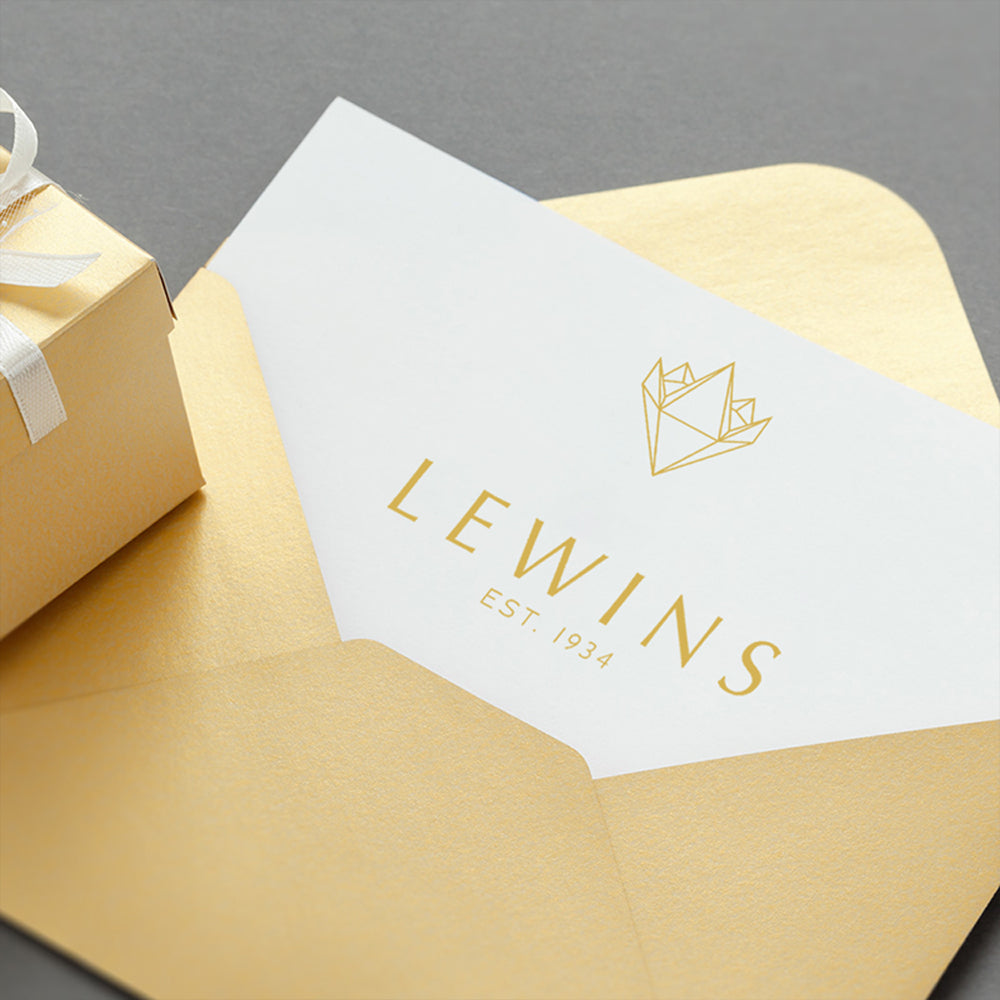This pendant is crafted in 9ct white gold, featuring a single pear mixed cut blue topaz, securely set within a claw setting and has an exceptional total of 2.15cts. Above the blue topaz pendulum, lies a butterfly motif, which is embellished with fourteen round cut amethysts, two diamonds and one tourmaline. The earrings are further adorned with a flower design, comprised of three heart shaped tourmalines and a single round cut diamond. The pendant is sleekly fitted with a concealed bale behind the butterfly motif, which can be worn as a necklace, by threading the bale through your desired chain.
Pendant Only or Pendant & Chain:
You have the option of purchasing this pendant with, or without the chain. If you decide to purchase the pendant with the chain (shown in the picture gallery above) - the chain is a: 9ct white gold, 18" rolo chain, secured with a bolt clasp. If you would like a different chain, please view further details in our Bespoke Alterations (see below).
Gem Lore:
Topaz - has been linked with the ancient Greek word ‘Topazions’, which was an island in the Red Sea. The island is currently referred to as ‘Zabargad’ in Egypt (and can further be translated to St John’s Island in english). Coincidentally, the island mined many yellow and green gemstones and incorrectly referred to them as Topaz. Alternatively, the name is thought to derive from the Sanskrit word ‘tapaz’, which translates to ‘fire’. The Egyptians believed that their Sun God Ra, provided the stones golden colour and protected the wearer from harm. Topaz naturally comes in white, yellow, brown and with the aid of treatment, pink and blue. Blue topaz possess a range of shades from: pale 'Sky Blue', to moderate 'Swiss Blue' and vividly saturated 'London Blue’. The most prized variety exhibits an orange body colour with pinkish red overtones and is known as imperial topaz.
Tourmaline - derives from the sinhalese (Sri Lanka) term ‘tourmali’, which simply translates to ‘mixed coloured stones’. Tourmaline is an umbrella term for six species, the most common member fashioned into jewellery, is called ‘Elbaite’. This species comes in a array of colours from: colourless, white, yellow, orange, red, pink, purple, blue, green, brown and black, which reflects the meaning of gemstone. Elbaite is named after the small Mediterranean island Elba, off the west coast of Italy, where tourmaline was first discovered. The ancient Egyptian pharaohs, unfolded the legend, in which tourmaline gained a kaleidoscope of colours, by breaking a rainbow whilst rising from the earth. Today, tourmaline it thought to symbolise creativity and insight.
Amethyst - derives from the Greek word ‘amethystos’, which translates to ‘not drunken’. The ancients greeks believed the stone to behold the power, of preventing intoxication. In ancient Persia, if Amethyst was carved into the sun, it was believed to deflect witchcraft. Amethyst, possesses a variation of intensity: from deep purples with subtle red glints, to pastel lilacs with hints of blue. The symbolisation of protection, has evolved in recent years, to being associated with healing and peace, frequently used in meditations techniques.
Diamond - derives from the Greek word ‘adamas’, which translates to ‘invincible’. Today, the meaning somewhat refers, to the gemstones excellent hardness (ranking 10 on Mohs' scale), hence diamonds are highly resistant to be scratched or abraded by another material, other than diamonds itself. Moreover, diamonds possess the magical phenomenon of fire, which relies on the facetted gemstones ability to disperse (split) light, into a rainbow of colours.
The ancient Egyptians thought diamonds symbolised life, and the Pharaohs were known to place the gemstone in the centre of an ankh cross. Whereas, the ancient Greeks believed diamonds to be the tears of the gods or broken splinters from fallen stars. Alternatively, in ancient Roman literature it is noted that Cupids arrows were ‘diamond tipped’, maybe one of the first references that associates the gemstone with love.
Pendant & Chains:
Ideally, we would love to be able to provide you, with all our options of different link styles, profiles and lengths of chains. However, for online viewing we will generally display all our pendants, on fine pendant chains between 16-18”. However, we understand that this is not always what is required.
If you like the link design of the chain shown above, in the photo gallery, but would prefer a different length, please let us know. Alternatively, if you would prefer an entirely different link design chain, with a different thickness, width or weight. You can either fill out the enquiry form below, or contact us directly.
We will see if we can help to make any bespoke alterations for your request, or advise you further. We will explore our full collection of chains and send you further photos, of different chains along with the pendant - for you to choose from.
Jewellery Care Precautions:
Avoid direct contact with: perfume, lotions, skincare, hairspray / other chemicals. Remove, your jewellery: when showering, swimming (as both chlorine and saltwater will react with metals), washing your hands / using hand sanitisers, before going to bed or when participating in physical activities (going to the gym, exercising, gardening, housework etc….).
Beware, metals may tarnish over time due to oxygen contact and natural body oils. Prevent items from being exposed to moisture and direct sunlight, for long periods. Store jewellery in a dry place away from humidity, in a pouch/jewellery box and keep each piece separated from each other. Care, for your jewellery by cleaning with a soft dry cloth.
White Gold:
White gold is not an element and does not occur naturally in a pure form. Pure yellow gold is mixed with alloys of white metals (such as palladium) to produce, a silver coloured alloy, known as white gold. It is further coated in a precious metal called rhodium (an element that derives from the same metal family as platinum), to increase its lustrous sheen and protect it from tarnishing and scratching.
Over time with exposure to oxygen and moisture, the rhodium coating will naturally wear and you will begin to see the natural yellow colour of gold. Rings will experience this more than other types of jewellery. The general guide for re-applying rhodium coating to your rings is between 1-2 years. However, the rate of wear depends on the pH level of your skin, exposure and contact to chemicals. For professional cleaning and rhodium coating, our workshop will provide the TLC your jewellery needs.
Topaz:
Hardness: 8 | Toughness: Fair | Stability: Good
Extreme Caution, Avoid: Sudden Impact (pressure, knocks), Extreme Temperature Change (thermal shock), Jewellery Cleaners (ultrasonic, steam cleaners).
Mild Caution, Avoid: Light.
Gemmological Observation: Avoid leaving for long periods in strong light, as in some cases the colour may fade. Avoid any rough handling that can cause abrasions. Topaz has a low toughness, as it possess moderately easy cleavage, which means that the stone can fracture if it experiences a sharp knock.
Tourmaline:
Hardness: 7-7.5 | Toughness: Good | Stability: Very Good
Extreme Caution, Avoid: Heat, Jewellery Cleaners (ultrasonic, steam cleaners).
Mild Caution, Avoid: Sudden Impact (pressure, knocks).
Gemmological Observation: Heat may cause colour to alter and fractures could worsen. Tourmaline is pyroelectric, this means that when the gemstone experiences a change in temperature (for instance heat from the sun/lighting) it causes a low-level electrical attraction to fine dust particles. Therefore, you may experience that any tourmaline-set jewellery may need frequently cleaning.
Amethyst, Crystalline Quartz:
Hardness: 7 | Toughness: Good | Stability: Good
Extreme Caution, Avoid: Light, Extreme Temperature Change (thermal shock), Jewellery Cleaners (steam cleaners).
Mild Caution, Avoid: Heat, Chemicals (acids, detergents, solvents, nail polish remover), Jewellery Cleaners (ultrasonic).
Gemmological Observation: Avoid leaving Amethyst in strong light/heat, as colour may fade, with prolonged exposure. Quartz is pyroelectric, this means that when the gemstone experiences a change in temperature (for instance heat from the sun/lighting) it causes a low-level electrical attraction to fine dust particles. Therefore, you may experience that any quartz-set jewellery may need frequently cleaning.
Diamond:
Hardness: 10 | Toughness: Good | Stability: Excellent
Low Caution: A very durable gemstone, generally it is safe to use in; Jewellery Cleaners (Dips, Ultrasonic, Steam Cleaners).
Gemmological Observation: Diamonds have excellent hardness, this means only a diamond can scratch/abrade another diamond. To avoid scratches, store your diamond set jewellery separately. Diamonds only have good toughness, as they possess perfect cleavage. This means that if knocked in the wrong direction, the diamond can cleave/fracture. Whilst wearing, you will need to avoid: Sudden Impact (sharp knocks). If the diamond is heavily fractured, you will need to avoid using: Jewellery Cleaners (ultrasonic, steam cleaners).
















 Contact Us
Contact Us







